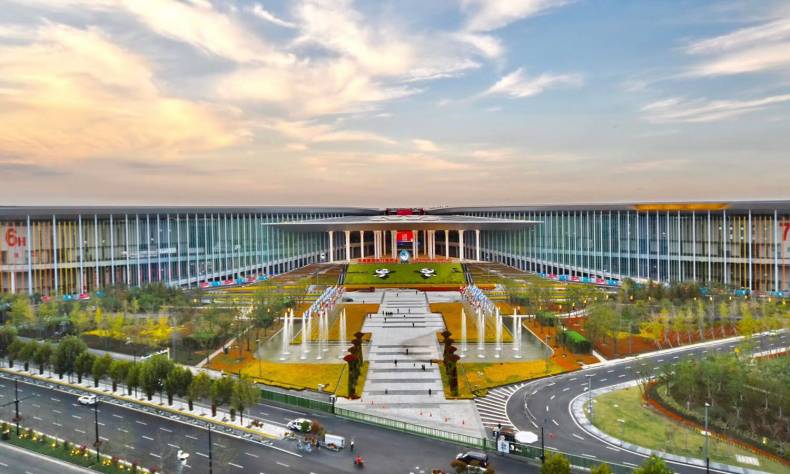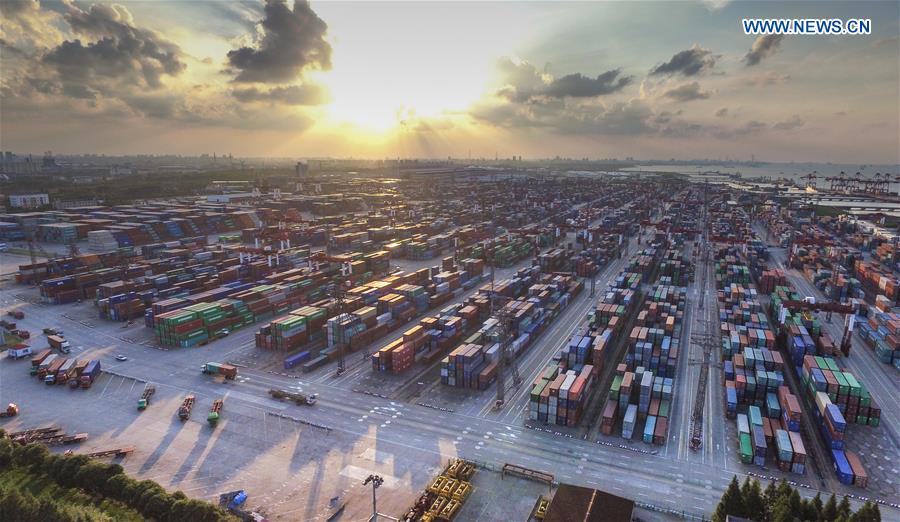
How Will China’s Pledge to Import Much More Be Achieved?
The measures that China is putting forward during the CIIE show its determination towards further opening up and integrating itself into the global economy.
During the opening ceremony of the China International Import Expo (CIIE) in Shanghai on Nov. 5, China announced its import of goods and services are expected to exceed US$30 trillion and US$10 trillion respectively in the coming 15 years.
China has been the world’s second largest merchandise importer for nine consecutive years. Last year, import of goods reached US$1.84 trillion, an increase of 15.9 percent from 2016.
Against the background of such an encouraging performance, a total of 172 countries, regions and international organizations from five continents are currently showcasing their development achievements and what they have to offer at the CIIE, a unique event being held for the first time.
More than 3,600 companies from other countries are taking advantage of the occasion to seek common development with hundreds of thousands of potential Chinese purchasers.
What will China import?
The top 10 imports last year were electrical machinery, equipment; mineral fuels, including oil; machinery, including computers; various mineral ores, slag, ash; optical and medical apparatus; vehicles; plastics and plastic articles; organic chemicals; oil seeds; and copper. These items account for three-quarters (75.2 percent) of China’s overall imports from the rest of the world.
Imported mineral fuels, including oil, grew the fastest (up 40.2 percent from 2016). In second place in this regard were purchases in the ores, slag and ash category (32.7 percent). Other significant improvements occurred in regard to organic chemicals (27 percent) and copper (23.9 percent).
It’s likely these product categories will continue to dominate the next 15 years. However, China is the world’s second largest economy with a market of more than 1.3 billion potential buyers, so that consumer products will also grow in importance.
Since the reform and opening up program began in the late 1970s, China has already experienced three consumption upgrades, namely 1978, 1992-1998 and 2012 respectively. Every consumption upgrade comes with an expansion of imports, and there’s no reason to doubt this will be the case with the fourth upgrade.
However, import expansion does not mean China will become the consumption products hub. China will import more and more intermediates to further develop its industries.
Meanwhile, China imports more services than it exports, so the provision of foreign services will also become increasingly important.

How will China achieve the goal?
To broaden the opening-up and expand imports will involve stepped-up efforts in several aspects. To stimulate the potential, the government will take more proactive measures to increase people’s income and spending power, foster new growth areas of medium-high-end consumption, continue to unleash the potential of the domestic market and expand the scope for imports, further lower tariffs, facilitate customs clearance procedures, reduce institutional costs in regard to imports, and promote cross-border e-commerce and other new forms and models of business.
China will continue to broaden market access, steadily increasing the openness of the financial sector, as well as its service sector, working toward greater openness in the agricultural, mining and manufacturing sectors, and accelerating opening up in such important areas as telecommunications, education, medical service and culture.
China will foster a world-class business environment for overseas multinationals and local corporations. It will continue promoting international cooperation at both the multilateral and bilateral levels, such as the Belt and Road Initiative (BRI), in the spirit of consultation and collaboration for shared benefits.
It will explore new ways to promote the opening-up process, supporting its pilot free trade zones (FTZ) to deepen reform and innovation, and expanding the scope of the China (Shanghai) Pilot Free Trade Zone in particular.
The measures that China is putting forward during the CIIE show its determination towards further opening up and integrating itself into the global economy. With the slogan “New Era, Shared Future,” the CIIE is set to become an open platform for win-win economic cooperation, an international public product, and a landmark project in the country’s higher-level opening up.
The author is a professor from School of Economics, Shanghai University.
Opinion articles reflect the views of their authors only, not necessarily those of China Focus
Source: China.org.cn.
 Facebook
Facebook
 Twitter
Twitter
 Linkedin
Linkedin
 Google +
Google +










